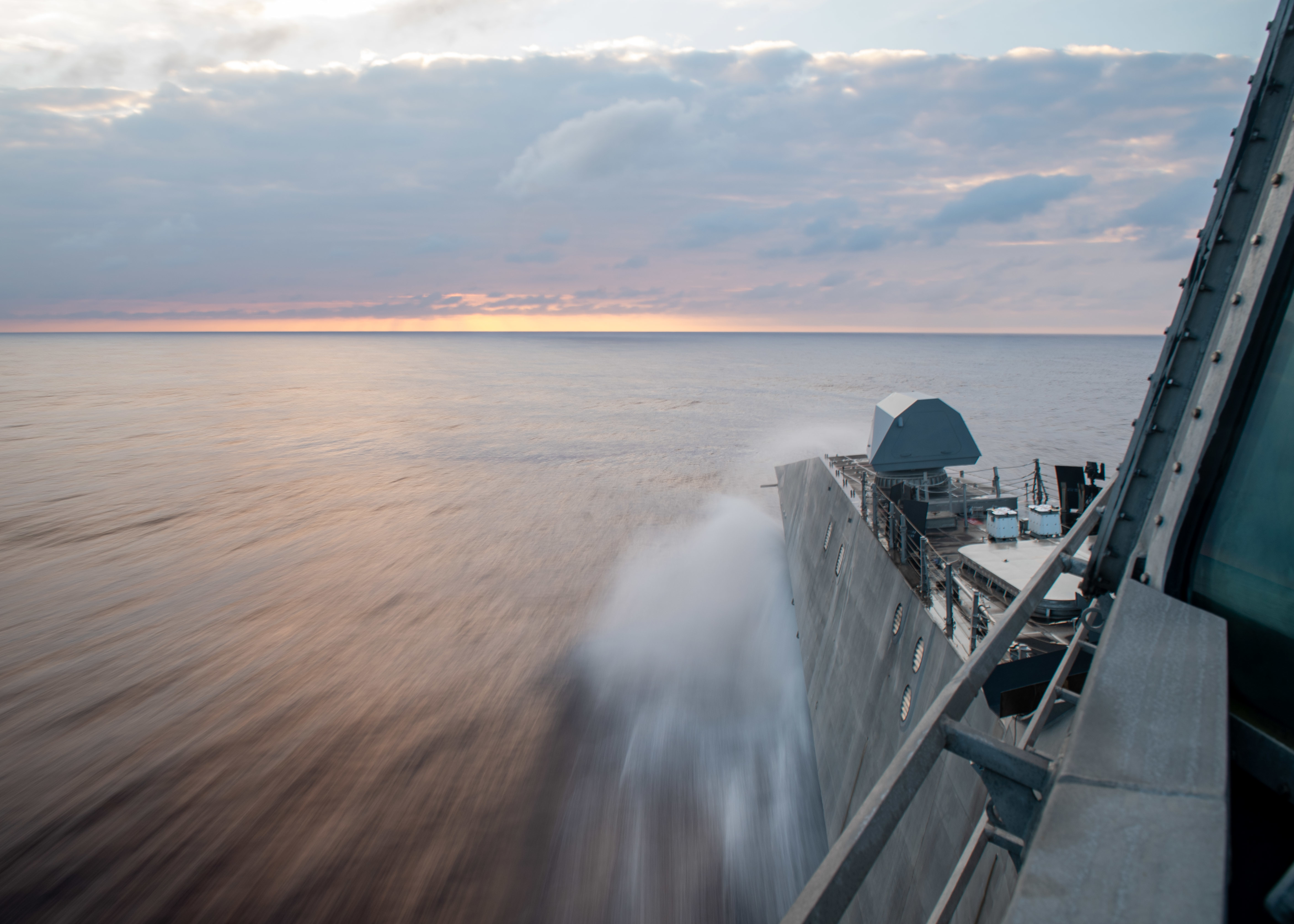
The challenge to the Navy’s surface fleet came in from the U.S. Pacific Fleet headquarters: deploy six littoral combat ships west of the International Dateline by 2025.
Littoral Combat Ship Squadron 1 answered the call from the PACFLEET CO Adm. Sam Paparo. It’s the San Diego, Calif.,-based parent command of the Navy’s fleet of Independence-variant aluminum trimaran ships.
Paparo “challenged the surface fleet to be able to deploy six littoral combat ships west of the dateline by 2025,” recalled Capt. Marc Crawford, commodore and LCSRON1 commander, in a Tuesday media call.
“I’m happy to report that we were able to achieve that goal two years early this year, when we had six ships operating west in a deployed status west of the dateline,” Crawford said during the media call. “That’s a Herculean effort… working with regional maintenance center and the RMC’s maintenance execution teams that provide materiel and support to the ships while they are forward-deployed and with support from 7th Fleet.”
Those LCS employments into the western Pacific and Oceania regions this year included the record-breaking 26-month overseas deployment of USS Charleston (LCS-18).
The ship, operating with rotational blue/gold crews, arrived at its San Diego home on June 14 after traveling across the Pacific. The U.S. Indo-Pacific Command deployment began with a successful launch of a Rolling Airframe Missile (SeaRAM) in a live-fire exercise and stayed busy as its crew training with military partners from Sri Lanka, Philippines, Indonesia, Japan, Brunei, Thailand, Australia and New Zealand. Charleston did several patrols in the East and South China seas, where China maintains a growing maritime presence.
“I’m extremely excited about what our ships bring to the operational fight out in the operational fight,” across 7th Fleet, Crawford said, “and we’re looking forward to expanding that out to the 5th Fleet operations in the Middle East in the years to come.”
The deployments across the Pacific were supported by a concerted effort to bolster the training and preparation of the lightly-manned LCS crews so the sailors can adequately operate and maintain their ship’s systems, senior LCS commanders said.
“LCS continues to make great improvements,” Rear Adm. Ted LeClair said during the media call.
LeClair currently leads the effort as director of Task Force Littoral Combat Ship, which Naval Surface Forces formed in 2021 to refine and guide the employment, maintenance and reliability of the LCS program. That move came as both LCS variants – the Indy-class and monohull Freedom-class – struggled with reliability driven partially to mechanical and engineering problems, including troubled combining gears in the Freedom-variant, and material availability that led to lost operating days.
“They became unreliable and, really, just difficult,” he said. “I know we’re in a much better place than we were two and a half years ago.”
Capt. Mark Haney, commodore of LCS Squadron 2 in Mayport, Fla., said on the media call that the Freedom-class ships continue to support fleet experimentation while deploying across the Atlantic and into U.S. Southern Command.
“These LCS have extreme flexibility and versatility, and we continue to expand what additional mission sets we can do for the Freedom LCS in support of the high-end fight,” Haney said.
In 2022, USS Sioux City (LCS-11) was the first Freedom-variant LCS deployed to 5th Fleet.
“It was very successful,” he said.
This year, Indianapolis (LCS-17) returned to CENTCOM and is “the first LCS to conduct sustained operations in Fifth Fleet, currently underway there today ensuring maritime security and stability in the Middle East region.”
Other Freedom-class variants have stayed busy operating throughout the 4th Fleet, 5th Fleet and 6th Fleet regions in recent years, Haney said. That includes a period from 2021-2022 when Sioux City and USS Billings (LCS-15) spent more than 600 operational days in 4th Fleet and the U.S. Southern Command region. Operations included drug busts during counter-narcotics missions with embarked Coast Guard law enforcement teams.
During 2022, USS Milwaukee (LCS-5), USS Detroit (LCS-7) and USS Little Rock (LCS-9) supported the fleet requirements, “freeing up large surface combatants to go do higher-tier missions focused elsewhere,” Haney said. Those three LCS since have been decommissioned in the Navy’s move to shed hulls and transfer some via foreign sales.
The Freedom variants made 120 port visits with U.S. partners and allies, Haney noted, adding “presence matters, especially when America’s focus is elsewhere.”
Maintenance support key

LeClair credits that turnaround to the focus on specific reliability and sustainability improvements, including more robust training and the shift of most ship maintenance to LCS crews and sailors rather than contractors.
“But we have a lot more work to do. We’re not there yet,” he added.
In August 2022, the Maintenance Execution Teams under each LCSRON transferred to NAVSEA to create formal METs to do preventative maintenance. For LCSRON1, teams at the Southwest Regional Maintenance Center’s Expeditionary Maintenance Department in San Diego are comprised of sailors experienced in the ship and its systems and can support intermediate maintenance at overseas bases and assist LCS crews with preventative work.
“It is really paying off. We are seeing a higher degree of preventative maintenance packages done on time… or at higher levels,” LeClair said.
“We’re continuing to invest in that,” he added. “Right now, the big focus is on preventative.”
Crawford credits that shift in how to tackle ship repairs and maintenance problems while underway with expanding and extending what LCS can do in supporting surface fleet operations.
“The Maintenance Execution Teams have been a game-changer for us,” he said. “We can’t deploy ships like we did for Charleston for 26 months without the enabling capabilities that the expeditionary maintenance execution teams provide.”
Crawford well knows the issues that can crop up while underway and away from port. He took command of Surface Division 11 in 2020. At the time, contractors did 95 percent of the maintenance, while LCS ship crews did 5 percent.
“We’ve done a paradigm shift,” he said.
METs today do “about 61.5 percent of the maintenance of our ships,” he said, and “in the next year to come, our goal is to get them to where the sailors are executing 95 percent of the maintenance, and the contractors are going to execute five percent.”
Haney added that among LCSRON2 ships, “75 percent of the maintenance on today’s ship is done by the ship’s force.”
The paradigm shift, Crawford said, “is all about building the self-sufficiency into the capability capacity of the sailors aboard the ship and then leveraging the reach-back capabilities with the METs, that can go out there and do expeditionary PMAS, preventative maintenance availabilities” to support LCS – and not just in Singapore and Japan, where the Navy has maintenance and logistics hubs.
Also important, he said, is having maintenance capability in partner nations and islands, like Australia, Guam, Brunei, the Philippines, “and expanding that capability, that capacity outside of our normal operating bases in the western Pacific.”
“We still do a lot of operations out of Singapore. Nothing’s changed,” he said. “We are adding capacity by working in other ports in the western Pacific… maybe allow ships to operate as a remote operating base or station that will allow us to do resupply and maintenance availabilities there.”
That includes perhaps having multiple repair and maintenance places for LCS in those locations in the western Pacific, “so that we’re not only going to Singapore, or only going to Japan or only going to Guam,” he said.
Motherships and MCM
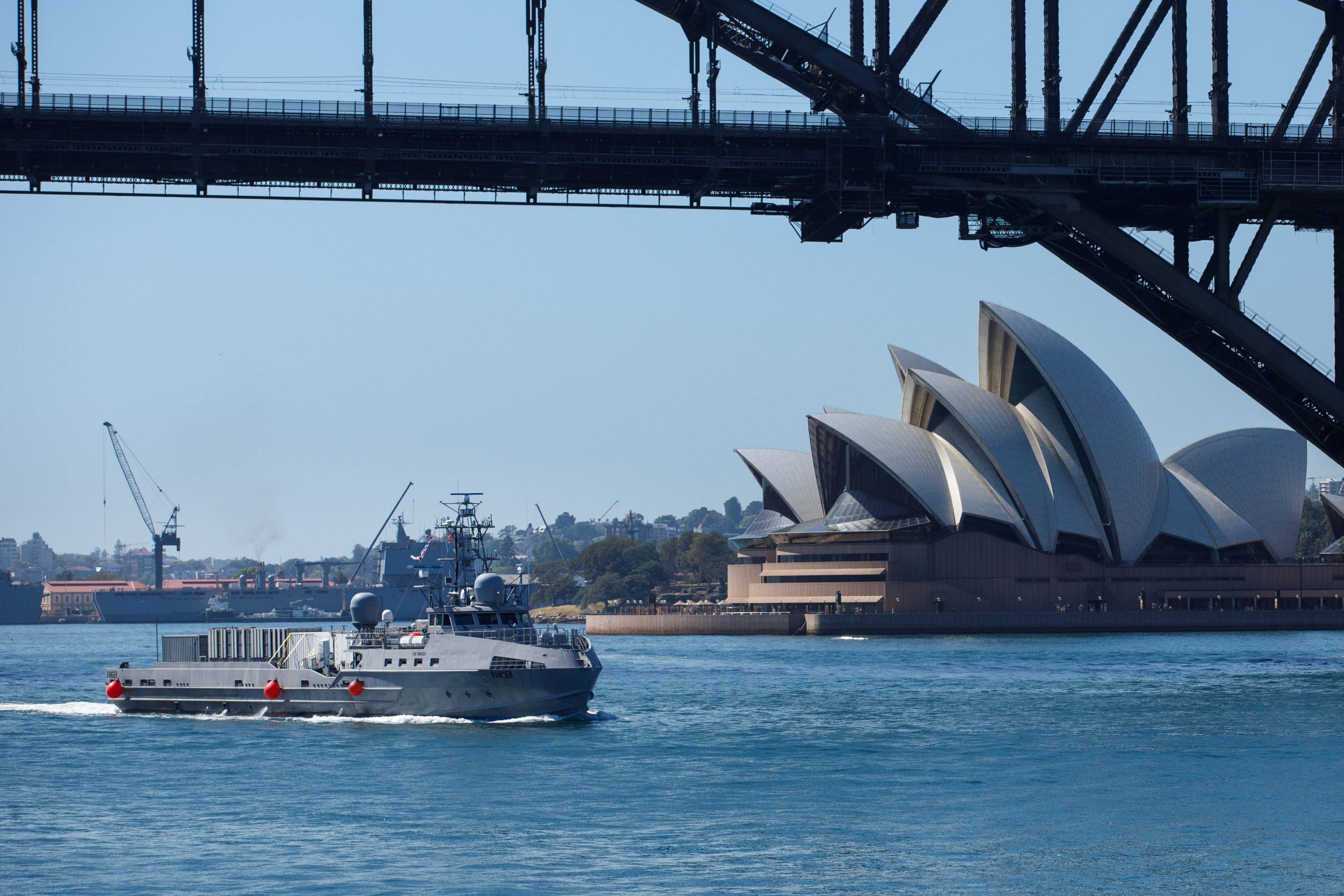
As it operates across the Pacific, the Independence variants are playing with innovation, most recently down under with the Navy’s ghost fleet and partners in Australia. In late October, USS Oakland (LCS-24) joined in a bilateral exercise Autonomous Warrior with the Royal Australian Navy in Sydney to test unmanned systems. Oakland operated as a mothership for the Unmanned Surface Division 1 vessels Ranger, Mariner, Seahawk and Sea Hunter.
“We are also pushing the innovative boundaries,” Crawford said, with Indy-class LCS working with some unmanned aerial and underwater systems for the first time and figuring how they could be employed in a joint operating environment.
“We’re not setting any boundaries. We’re looking at all options that we can utilize,” Crawford added.
Both variants were built with expansive mission bays to support modular capabilities for specialized mission packages including surface warfare in a plug-and-play fashion. Their flights decks are larger than those of destroyers and support helicopters and unmanned drones, like the MQ-8C Fire Scout.
Additional capabilities are coming for Independence-class ships, including integration of the mine countermeasures (MCM) mission package placed aboard USS Canberra (LCS-30).
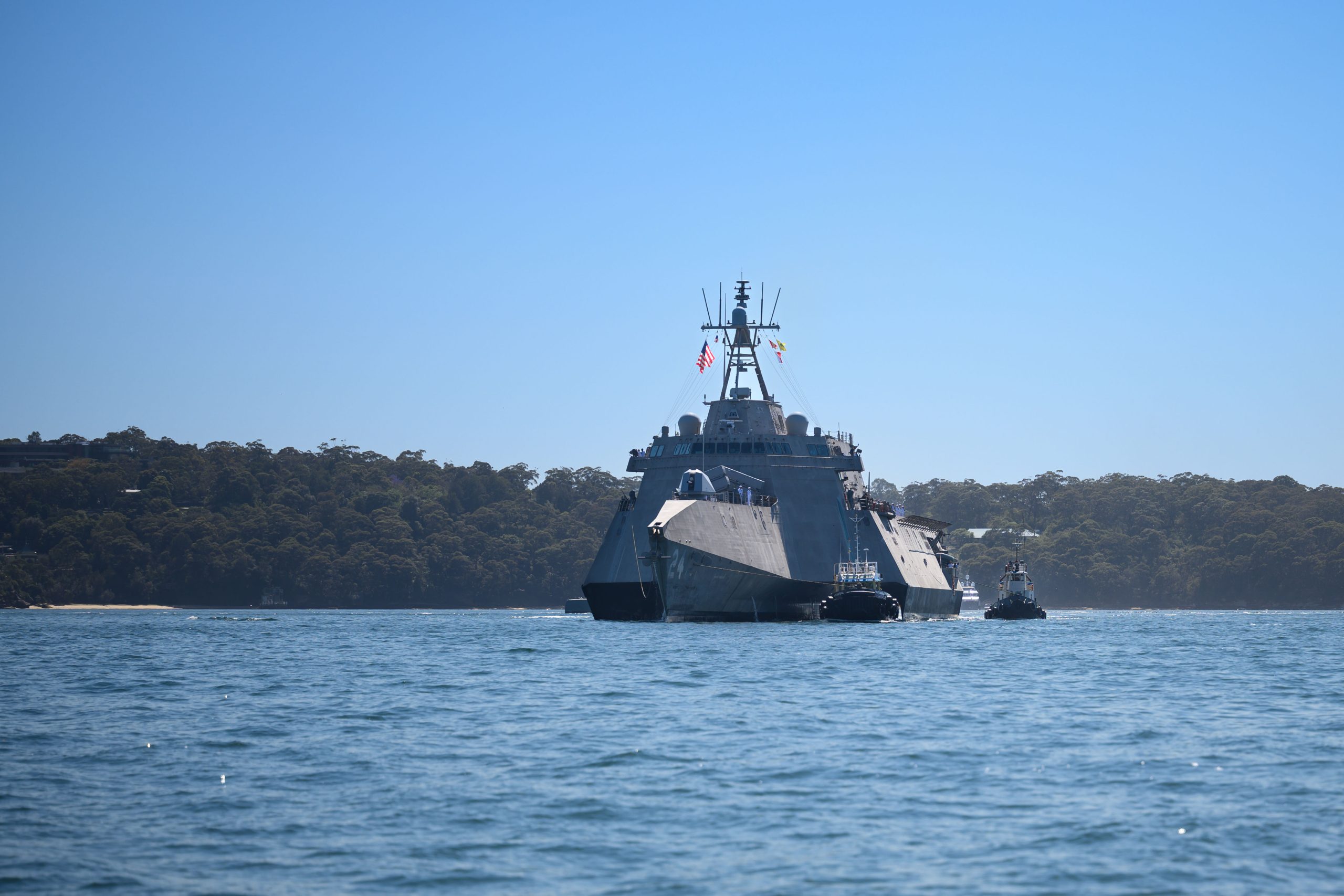
“We’ve reached initial operating capability with that system” – that came in May – “and are moving toward the full operating capability milestone,” Crawford said.
“A ship is going to be deploying with that mission package over the next year or so,” he said, “and not just Canberra. USS Santa Barbara (LCS-32), USS Tulsa (LCS-16) and others… are going to be deploying with this mission package. So we are evolving the training and certification pipeline for those systems so that our ships are full certified when they go out and deploy.”
The prime emphasis is to provide a platform for the mine countermeasures (MCM) missions.
“The bread and butter,” LeClair said, “is the MCM mission package. That’s a no-fail mission as we’re approaching FOC.”
He noted most of the ongoing experimentation and innovation is pre-decisional.
“I think in 12 to 16 months, we’ll have a lot to share with you,” he said. “Be assured that we are looking at everything, and we’re trying to be targeted in what we think we can bring for capability to the PacFleet commander and to 5th Fleet.”
Bona fide combatants
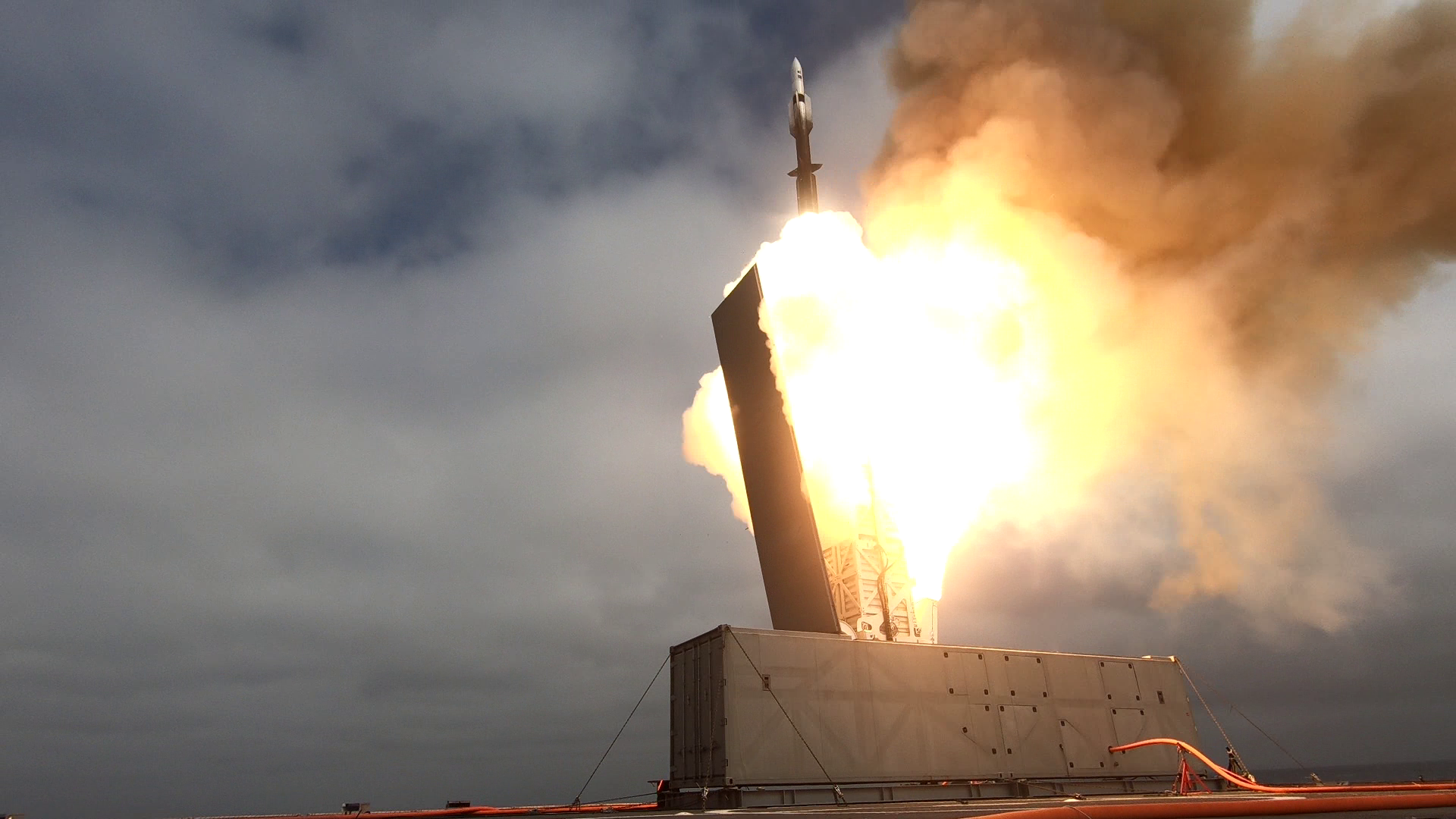
But right now, the task force is focused on making sure it has reliable ships, LeClair said.
That includes the “lethality and survivability package programmed for Independence-variant. They are looking at other options” for Freedom-class ships.
With Naval Strike Missile installations – all deploying Indy-class hulls have them – and SM-6 launcher testing on Tulsa and Savannah, he said, “I think the question of do the ships have lethality and capability – is kind of off the table.”
And as for the ships’ reliability, added, “I think we’ve proven that yeah, we can keep them reliable. But we have more work to do.”
Haney said the Freedom-class LCS meets most of the mission requirements when operating in the 4th Fleet and 5th Fleet regions.
“When there’s not an LCS there, there’s requirement for another surface combatant – a DDG – so an LCS frees up that (guided missile destroyer) to go do the high-tier mission fight that we need it to do,” he said, while still meeting other missions taskings for those fleet commanders. “In many cases, LCS supports the high-end fight by bringing up the readiness of our DDGs, our premier warfighting entities, to go focus on that high-end fight,” he added.
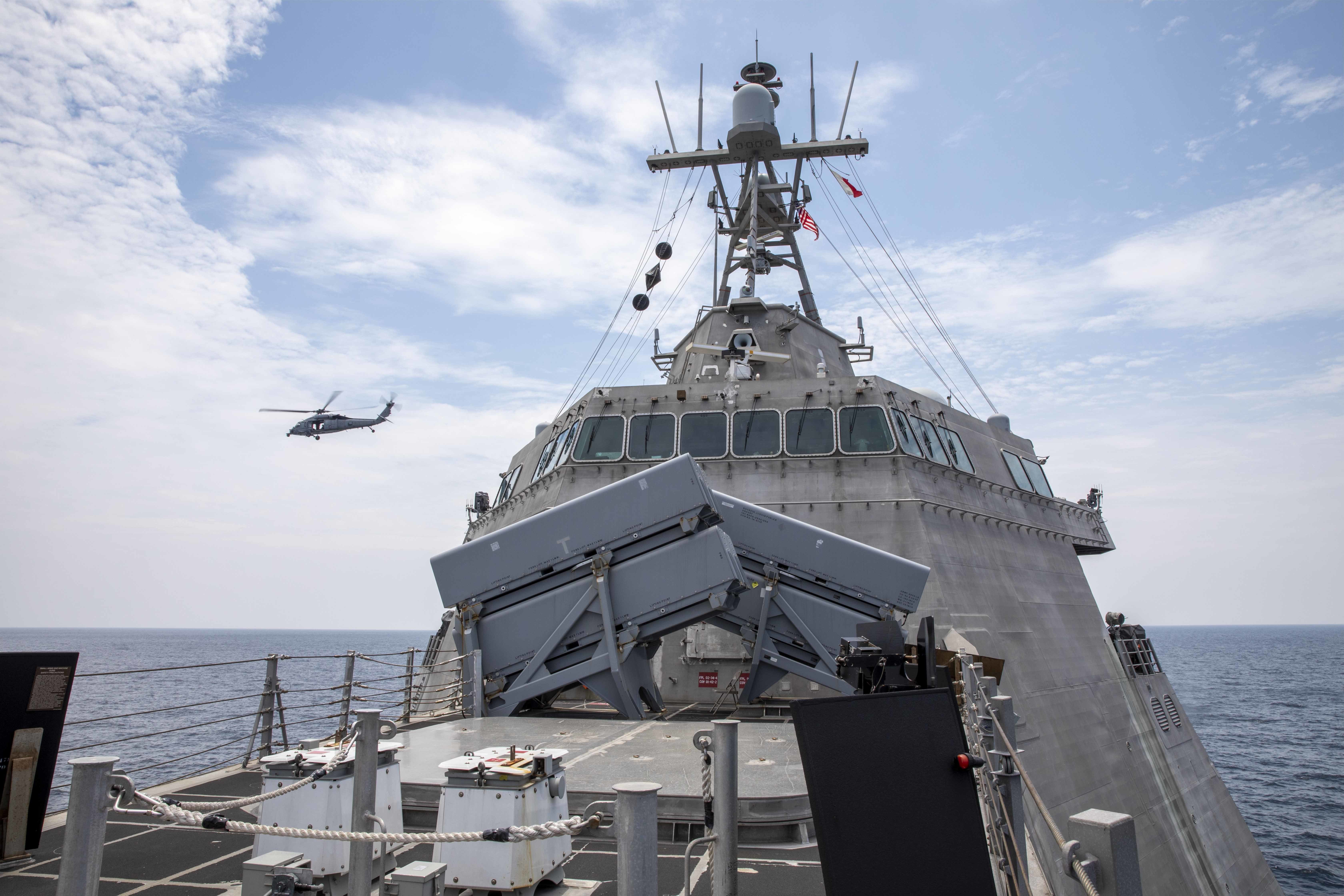
“We have hit our stride with the Independence variant,” Crawford said. “The LCS is often being invited to the dance, so to speak, whether it’s the Air Force, the Army, the Marines or the Navy operational commanders. We are using these ships in ways that we never thought before possible. We are forging new territory with the MCM mission package and moving onto full operational capability.”
“We are also cognizant as we prepare these ships to relieve the (mine countermeasure) Avengers over the next several years that these ships more than just mine-sweepers. They are multi-warfare capable ships that are capable of doing mine warfare and a whole host of other mission sets,” he said.
LCS can do full-spectrum of operations, he added.
“Our imagination is boundless. So we are really excited about the different opportunities we have. In the next year or so we’ll be able to talk about the things we are experimenting with. So there is a good news story in here.”





